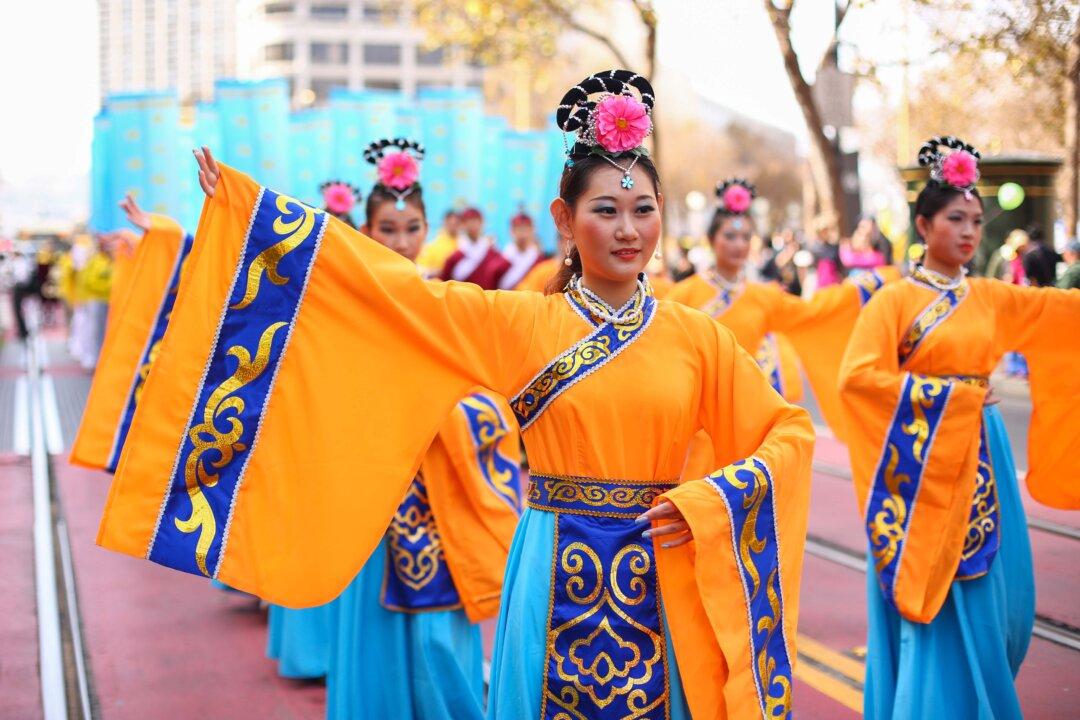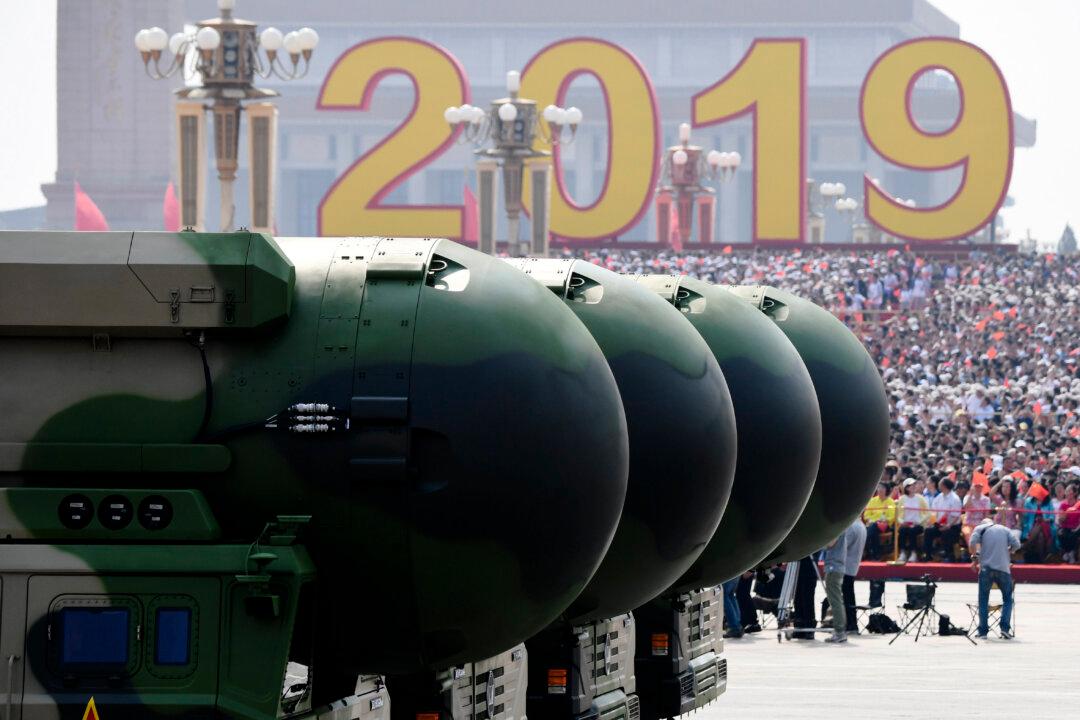Late in the crisp, mostly cloudless morning of Oct. 22, thousands of people took part in a march meant to help end a bloody persecution taking place in China.
While the occasion was solemn, the march put on by practitioners of the spiritual practice of Falun Gong was bright and colorful. Led by a marching band in blue uniforms, the parade featured floats, practitioners clad in yellow or wearing traditional Chinese costumes, and a drum corps in bright yellow uniforms that brought up the rear.
Many of the participants had just finished meditating at the UN Plaza before getting into formation to start the parade at 11 a.m. They then made their way from the Plaza through the commercial districts and Chinatown.
Falun Gong was first taught in China about a quarter century ago, and is now practiced in 76 countries worldwide, plus Hong Kong, a Special Administrative Region of China, and Taiwan, which is independent of China but by treaty is considered part of one China.
Also known as Falun Dafa, Falun Gong incorporates five slow-moving qigong exercises with traditional spiritual teachings based on the principles of truthfulness, compassion, and tolerance. After its introduction to the Chinese public, Falun Gong became massively popular, with state estimates putting the number of adherents at 70 million in 1999. Falun Gong sources say the number was over 100 million, or one in 13 people in China.





